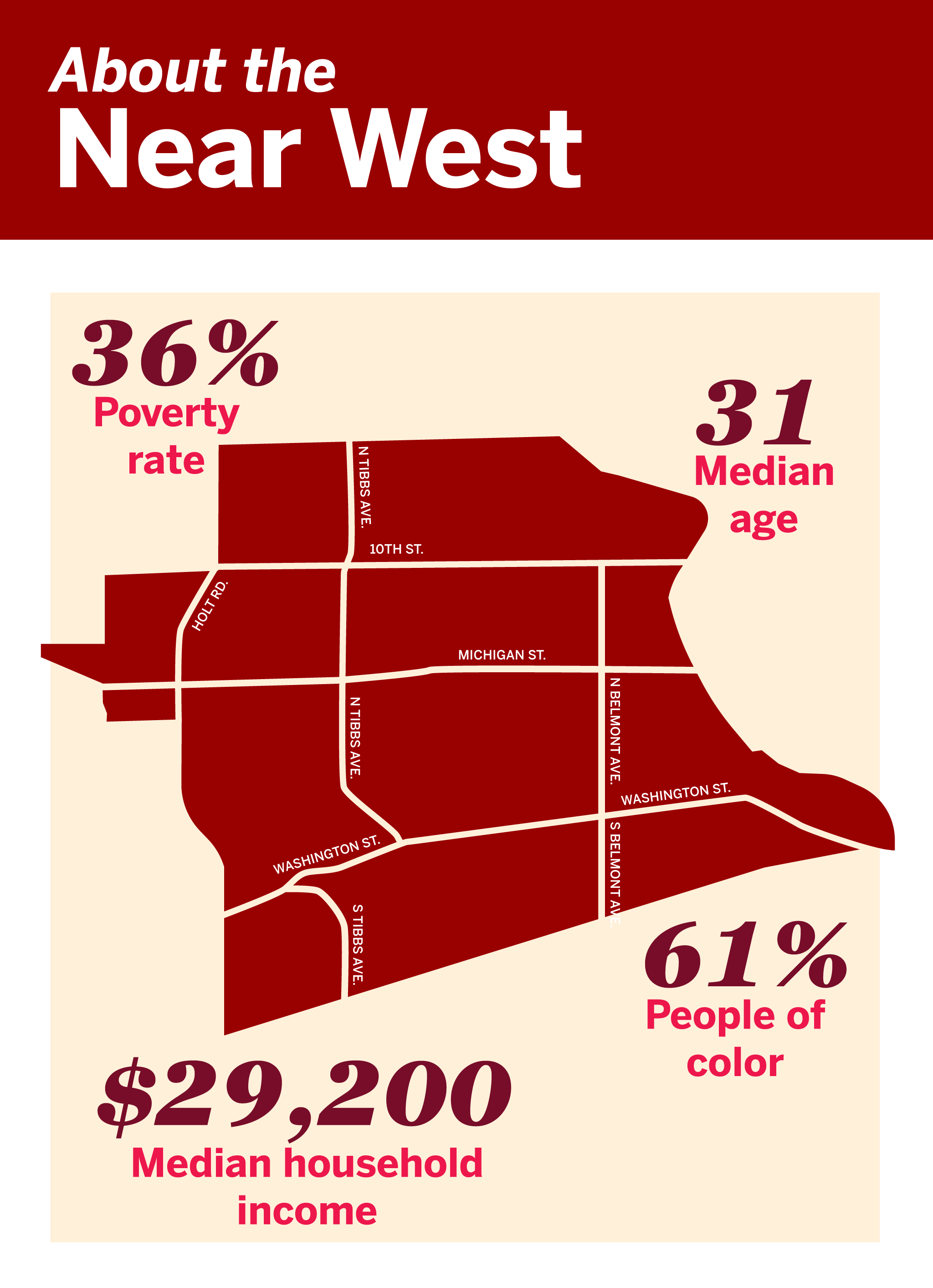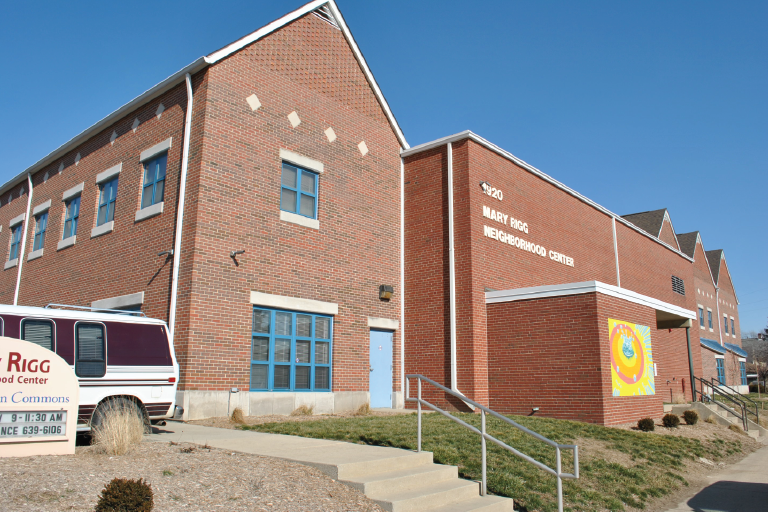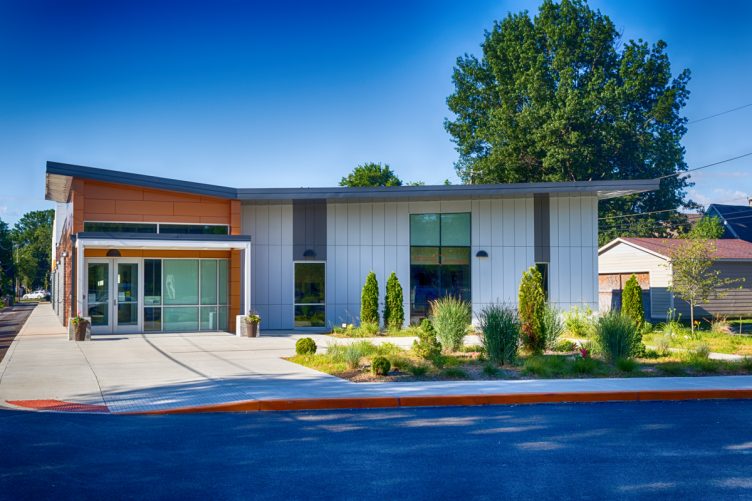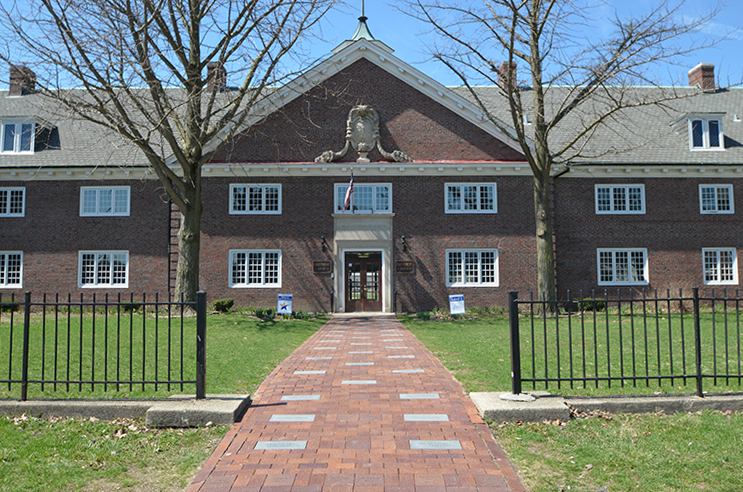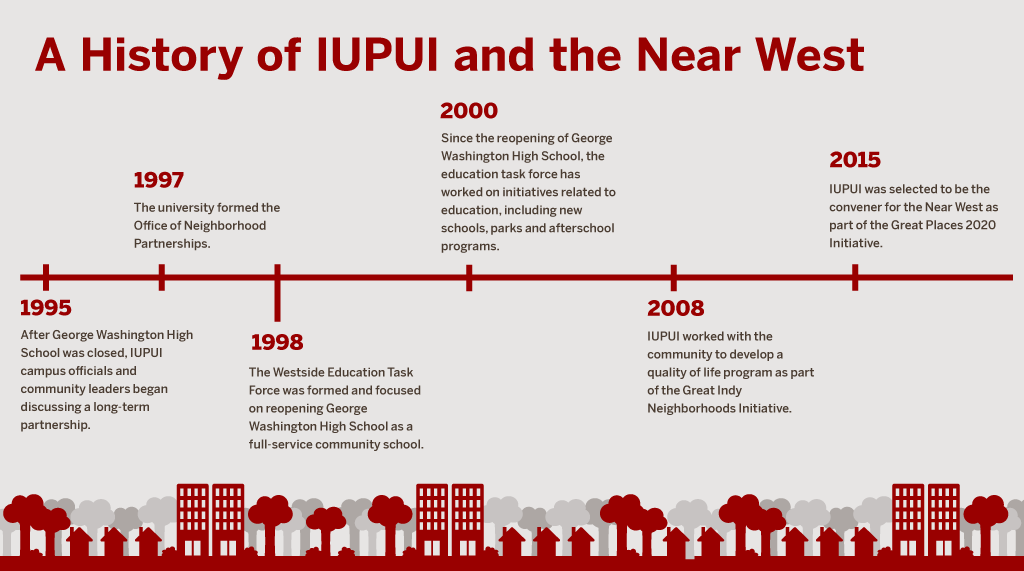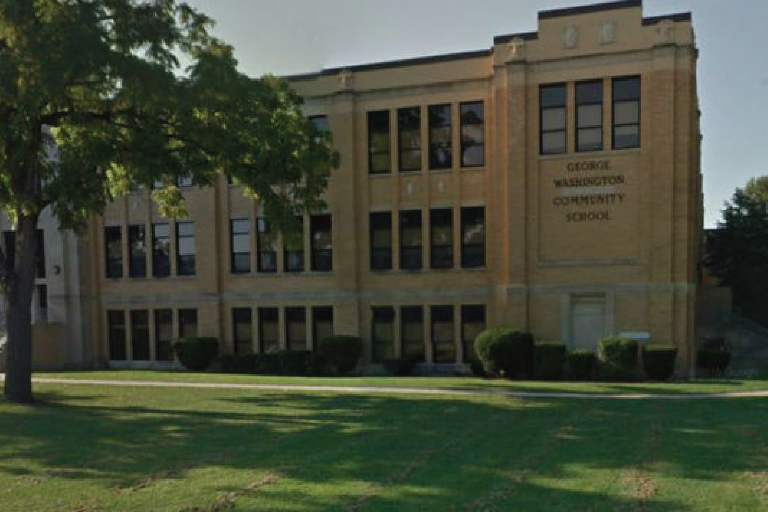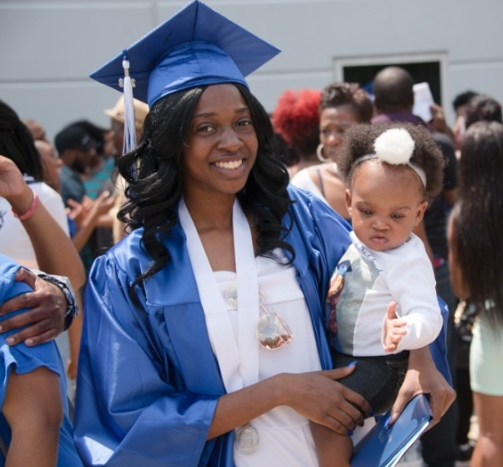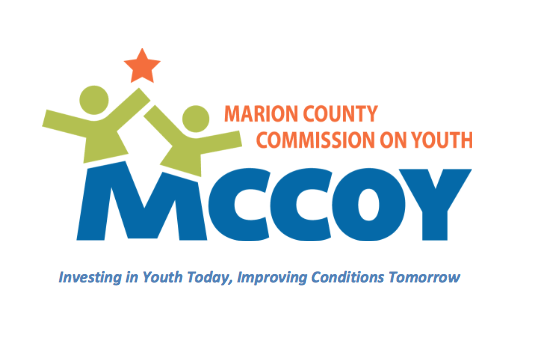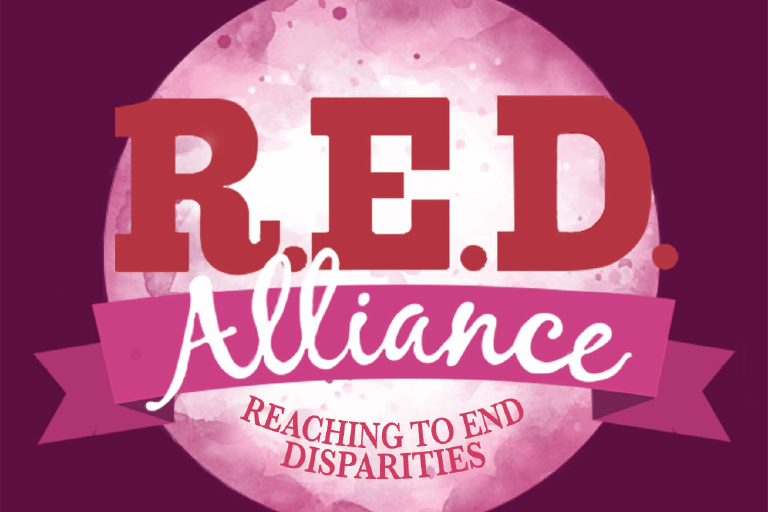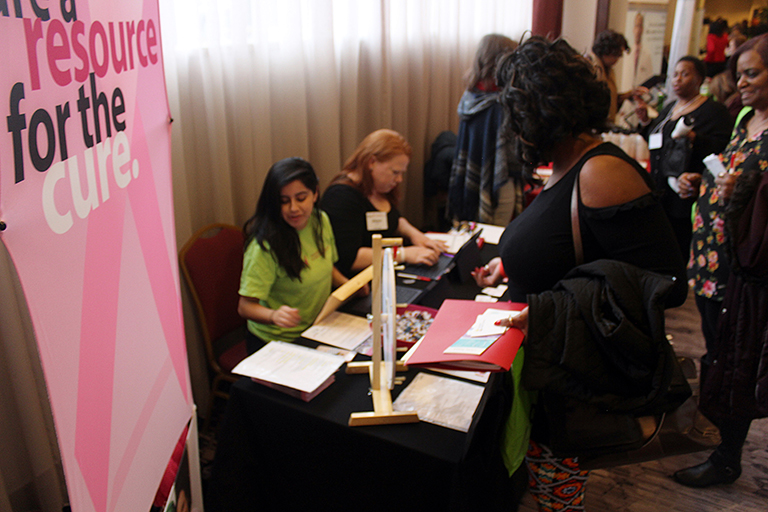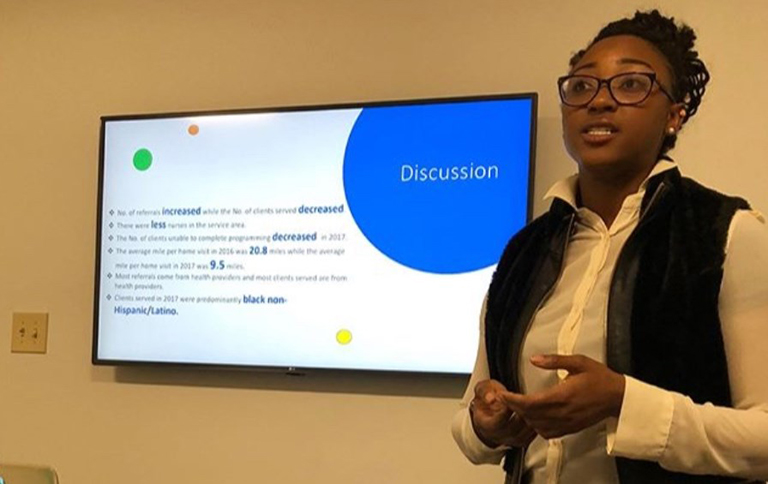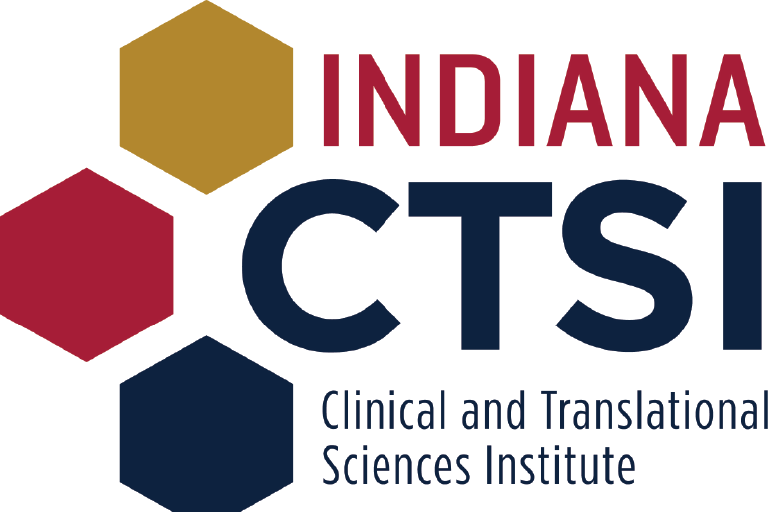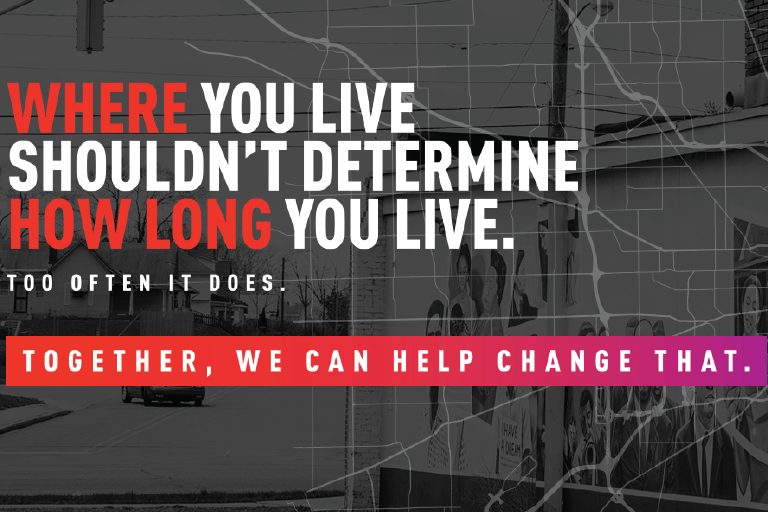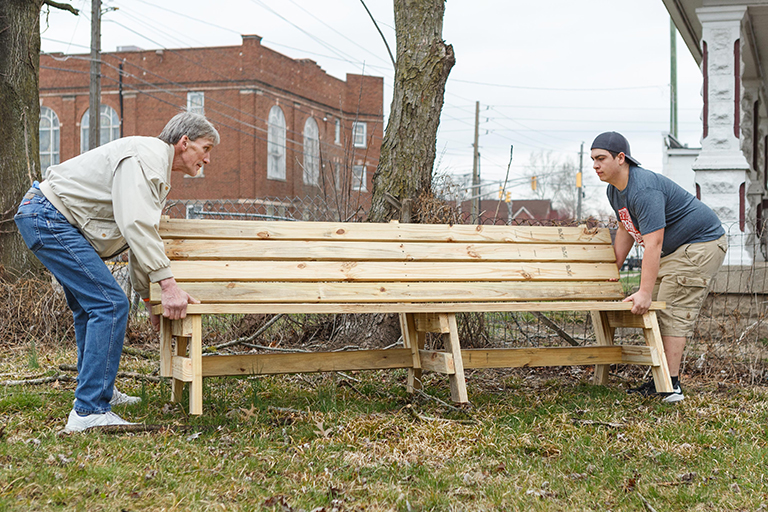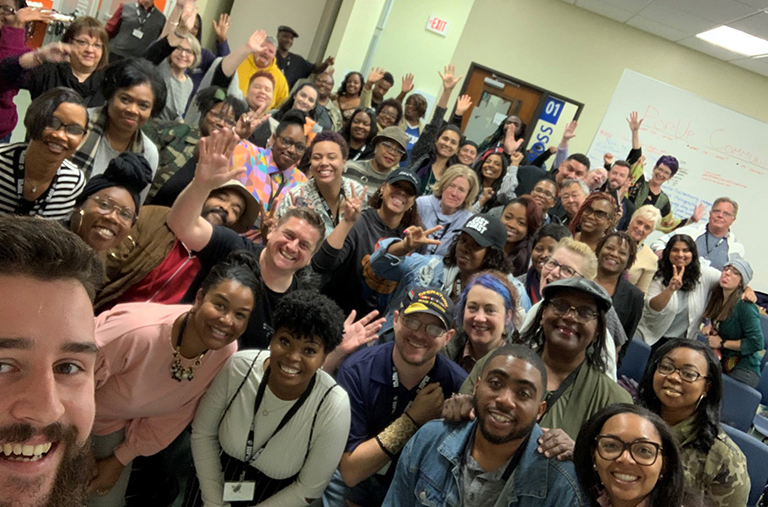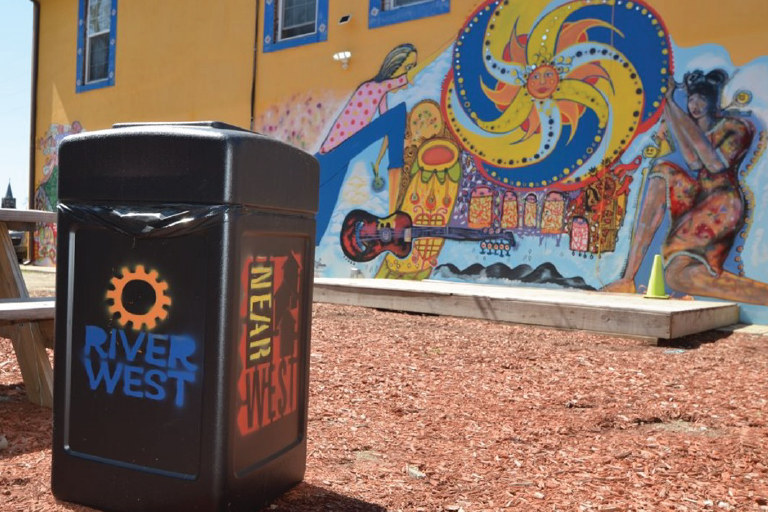History of community engagement
After George Washington High School, was closed by Indianapolis Public Schools in 1995, IUPUI campus officials and community leaders began discussing a long-term partnership between the campus and the Westside Cooperative Organization, the neighborhood organization at the time. In 1997, the university formed the Office of Neighborhood Partnerships to dedicate staff to supporting partnerships with the community. This work is now continued by the IU Indianapolis Office of Community Engagement.
In 1998, a U.S. Department of Housing and Urban Development Community Outreach Partnerships Centers grant led to the formation of the Westside Education Task Force. The group, which included university faculty and staff members, residents, community leaders, and staff members from neighborhood organizations, focused on reopening George Washington High School as a full-service community school that serves the students and their families.
Since the reopening of the school in 2000, the Westside Education Task Force has worked on initiatives related to education, including new schools, parks, and afterschool programs. PARCS, a fitness center program for the community, is located in George Washington High School and staffed by university students through the IU Indianapolis School of Health and Human Sciences.
Through the partnership with IU Indianapolis faculty and staff, IU Indianapolis also offers teacher education opportunities, community service activities, service-learning classes, and scholars who work at the high school.
George Washington High School has been recognized nationally as a model for community-university partnerships, and others have strived to replicate this model. Read more: Indiana University–Purdue University Indianapolis and George Washington Community High School: Educating Their Communities Together.
In 2008, IUPUI staff served on the Near West Steering Committee that developed a quality of life plan for the community as part of the Great Indy Neighborhoods Initiative focused on seven priority areas for the immediate and long-term vitality of the neighborhood: housing, public safety, beautification, economic development, education, health, and civic/youth engagement. Out of this effort grew an annual health fair, and the IUPUI Faculty Community Fellows program and Community Partner Scholars, which both served to expand capacity for community agencies. Fugate Scholars were also created to place IUPUI students in Near West schools to promote college readiness.
In 2015, IUPUI was selected to be the convener for the Near West as part of the Great Places 2020 initiative, which focused on transforming six Marion County neighborhoods into dynamic centers of culture, commerce and community. Through this initiative, philanthropic, civic and private partners engaged with the neighborhoods to make significant social and capital investments to enhance quality of life and spur private investment. One of the key outcomes was the creation of the SOURCE River West entrepreneurship center. Read more about SOURCE below.
Herron School of Art and Design partnered on a project in 2017 to create design guidelines for the River West Urban Village. In four meetings, community members were asked to define their preferences for design in the neighborhood and also discussed the identity of the area and how to involve local businesses. The guidelines have helped shape development along Michigan Street, west of campus, to reflect the character of the community.



